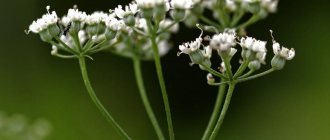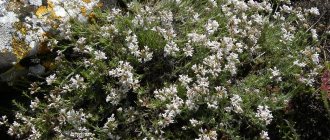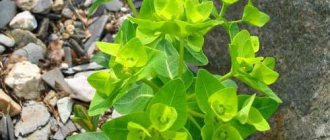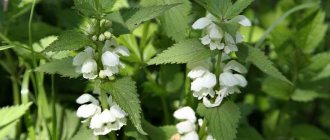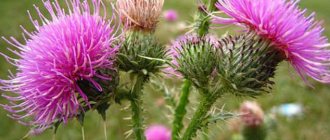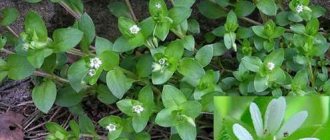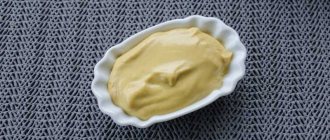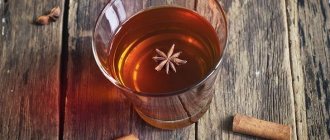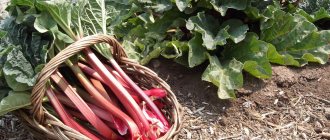What it looks like and where it grows
Anise is an annual herb belonging to the Celery family. It has a lot of health benefits. The length of its stem is 50-60 cm. Closer to the ground it is straight, and towards the top it begins to branch. On the surface of the shoots you can notice characteristic pubescence. The leaves located at the foot have incised-toothed edges. In the middle of the stem there are wedge-shaped leaves. At the top they can be whole or divided into 3 parts. In appearance, anise partially resembles dill.
The flowering period of anise is June-July. The inflorescences of the plant appear at the top. They are complex umbrellas covered with small white flowers. From a distance they resemble sea foam.
The anise plant, the photo of which is posted below, has a lot of medicinal properties. Thanks to this, it began to be cultivated in Mexico and Southern Europe. In Russia, the plant is found everywhere in Voronezh, Belgorod, Kursk region and Krasnodar region. Anise prefers areas with black soil. It does not live in saline and clayey soil.
The bright sweet aroma of the plant is due to its rich anethole content.
Attention! Anise normalizes the process of perceiving the taste of food, thereby improving appetite.
What does anise look like?
Common anise, also known as aniseed anise, is a typical representative of the Celeryaceae (Umbrella) family. This is an annual herb up to 60 cm high, with graceful pubescence. The stems of the plant are dotted with grooves and do not branch much in the upper third. The leaves have different shapes depending on the tier: the lower ones are like those of parsley, the upper ones are like those of dill.
Common anise blooms inconspicuously: its white petals barely reach 1.5 mm in length. To attract pollinators, the flowers are collected in complex umbels up to 6 cm in diameter.
The fruits of this plant are a plant with two seeds up to 5 mm long. For their unique smell and taste, the plant is called sweet cumin.
In large thickets, anise inflorescences look like light foam
Chemical composition of anise
The healing properties of anise are explained by its rich composition. It contains a large number of organic compounds. The content of aromatic acids is of no small importance. The highest concentration of nutrients is found in the fruits of the plant. The chemical composition of anise includes the following elements:
- essential oils;
- anisic acid;
- vitamins of groups B, C and P;
- anisketone;
- camphene;
- ketin;
- aldehyde;
- minerals (calcium, zinc, phosphorus, magnesium, manganese, copper and potassium);
- methylchavicol;
- organic acids;
- anethole;
- dipentene;
- saccharides;
- fixed oils.
Methylchavicol has an antispasmodic and tonic effect on the body. It has a beneficial effect on kidney function. The vitamin component in the plant helps strengthen the immune system. Organic acids help maintain acid-base balance in the body. The need for them increases with low stomach acidity, chronic overexertion and kidney disease.
Essential oils contained in anise have a beneficial effect on the functioning of the nervous system. Anethole, in turn, has antimicrobial and analgesic effects. It helps cope with pathogenic microorganisms.
Beneficial properties of anise and its contraindications
Anise is a truly unique plant, having an antispasmodic, carminative effect, it helps get rid of intestinal colic and spasm of the small intestine.
An infusion of anise seeds, in combination with mint, pine and orange oil, infusion of goldenrod and horsetail, birch leaves and parsley root - copes well with genitourinary diseases, fights infection, relieves inflammation of the bladder and has a diuretic effect.
Anise seed oil has an anti-inflammatory and antiseptic effect on minor wounds and abrasions. An infusion of anise fruit helps cope with respiratory diseases and has thinning and expectorant properties.
Anise tea stimulates lactation in women, helps cope with menstrual pain and restores the cycle. Helps in the fight against frigidity in women, increases potency in men, strengthens the immune system and fights depression.
Anise seeds are rich in fatty and essential oils, plant protein compounds, organic acids and microelements.
Anethole, the aromatic component of anise, gives the seed a spicy, persistent aroma and a characteristic sweetish taste.
One of the purposes of anise is to obtain essential anise oil from its fruit. Its oil is included in recipes for various tinctures and elixirs, and is used in herbal medicine and cosmetic procedures.
Anise oil can cope with headaches, eliminate migraines, cope with insomnia, and help in the fight against tachycardia. Eating anise daily will restore immunity and have a beneficial effect on the body as a whole.
Traditional medicine uses ground anise to relieve pain, swelling and itching after insect bites, as well as to treat burns.
Infusions of anise are used to combat diseases of the nasopharynx and periodontal disease, for this: 30 grams of crushed anise, pour a glass of boiling water, let it brew, add 8 drops of fir oil, sage oil, dilute with a glass of strong decoction of chamomile and sanitize the oral cavity daily for two weeks.
All highly effective medicinal plants have their own contraindications, and anise is not left out. Anise is contraindicated for allergy sufferers and pregnant women. Long-term use of a medicinal plant or exceeding the dosage leads to allergic skin rashes.
What is useful and what does anise treat?
Since ancient times, anise has been widely used to treat various diseases. The seeds of the plant have become especially popular. 100 g of seeds contain a daily dose of copper and manganese, as well as ½ of the daily dose of iron. That is why anise can be used as a prophylactic. It perfectly strengthens the immune system and normalizes digestion. The beneficial properties of anise for the human body include:
- getting rid of insomnia;
- anti-inflammatory effect;
- improvement of visual function;
- relieving spasms and pain;
- normalization of kidney function;
- sedative effect;
- improvement of skin and hair condition;
- antimicrobial and antiviral effects;
- acceleration of regenerative processes;
- treatment of skin diseases;
- appetite stimulation;
- getting rid of flatulence;
- improving the functioning of the heart muscle;
- antiparasitic effect;
- normalization of intestinal function.
Anise is used as an active ingredient in some deodorizing products.
What are the benefits of anise for women?
Due to its antispasmodic effect, anise is often used to relieve menstrual pain. Anti-inflammatory and diuretic effects allow it to be used for the treatment of genitourinary infections. The rejuvenating effect of the plant is important in the fight against age-related changes. The plant is often used to make cosmetics. During breastfeeding, anise is recommended to be used to improve lactation.
Important! In the third trimester of pregnancy, women are sometimes recommended to use anise to stimulate labor.
What are the benefits of anise for men?
The beneficial properties and uses of anise are also in demand among men. It is often used to treat erectile dysfunction. It also has a beneficial effect on the emotional background and improves appetite. Anise is recommended for use by men whose activities involve heavy nervous stress. It helps them improve their immunity and physical stamina.
What do these spices taste like?
The differences between these representatives of the plant kingdom lie in their belonging to different botanical species.
Star anise is an evergreen shrub native to Southeast Asia. Currently, it is cultivated in Japan, Southeast China, India, Vietnam and other countries. It can also grow as a tree with an erect trunk and reach a height of 6 to 10 meters. The fruits ripen on its fragile, easily broken branches already in the fifth year of growth. However, star anise seeds become suitable for human consumption only from trees that have reached 15 years of age. The fruiting period lasts up to 100 years.
Star anise is harvested in the fall. Europe was first introduced to the bittersweet taste of Chinese seasoning in the 16th century. Unlike the oriental spice, common anise (sweet cumin or aniseed thigh - its other names) is an annual herbaceous plant belonging to the Umbelliferae family. It, like fennel or dill, grows to a height of up to 0.7 m. Its wide distribution area is the CIS countries, Africa, America and Europe.
The smells of star anise and anise (gourmets and perfumers can tell you what the difference is) are really similar to each other. Therefore, when the oriental spice became available in Europe and Russia, people dubbed it “anise.”
Anyone who often had a cold in childhood is familiar with the sensations of using cough syrups called “Pertussin” and “Pectusin”. It is their pleasant aftertaste that is due to the presence of star anise in the original composition. Today, it is increasingly practiced to replace the expensive oriental spice with anise in warming syrups, which is more economical, but does not affect the degree of effect of the medicine.
Both spices - anise and star anise - equally favorably warm up the human body. The taste of the seeds of the oriental spice is bittersweet, astringent and pungent. The fruits of herbaceous anise are characterized by a sweet-spicy aftertaste. The smell of star anise is very similar to anise, but it is much subtler, more complex and multifaceted.
Cooking methods
Anise has been used medicinally for thousands of years. During this time, several methods of preparing it became widespread. To stimulate appetite and improve the functioning of the gastrointestinal tract, alcohol tincture is often used. The decoction has a pronounced diuretic effect. Anise infusion is used to eliminate insomnia. When choosing a method for preparing a medicinal product, you need to take into account the nature of the disease. To obtain the desired effectiveness, it is extremely important to follow the recipe.
Tincture
Anise tincture has gained immense popularity in the treatment of colds. It significantly improves immunity and improves digestion. Among other things, it can be used as a disinfectant. It effectively kills pathogenic bacteria and relieves pain. But this type of medicinal product is not recommended for children and pregnant women.
Components:
- 1.2 liters of vodka;
- 100 g anise seeds.
Cooking process:
- The seeds are poured into a dark glass bottle and filled with 600 ml of vodka.
- The drink must be infused in a dark place for 3 days.
- After the specified time, add the remaining vodka to the container.
- The drink is taken 5-10 drops 3 times a day.
Anise has the ability to increase the bactericidal properties of the skin
Infusion
The infusion is great for coping with anxiety and eliminating stomach pain. The substances in its composition are also capable of cleansing liver cells. To eliminate insomnia, the herbal infusion is drunk in combination with hot milk.
Ingredients:
- 1 tsp. crushed anise;
- 250 ml hot water.
Cooking steps:
- The raw materials are poured into a suitable container and filled with water.
- After 15 minutes, the drink is filtered.
- Reception is carried out in 1-2 tbsp. l. up to 4 times a day, before meals.
The infusion is not recommended to be taken more than 5 times a day
Decoction
Anise decoction is taken orally for a prolonged cough. It is sometimes used to reduce cravings for nicotine. The decoction eliminates bad breath and heals minor damage to the mucous membrane. In some cases, it is used to relieve flatulence.
Components:
- 200 ml boiling water;
- 20 g anise seeds;
- 20 g honey.
Recipe:
- The seeds of the plant are poured with water, after which the container is placed on the fire.
- The drink must be brewed for 15 minutes.
- After removing from the heat, the broth is infused for another 20 minutes.
- Add honey to the finished drink, stirring it thoroughly.
- The decoction is filtered and taken 1 tbsp. l. 3 times a day.
Honey should be added to the cooled broth
Advice! In combination with mint, anise is often used to eliminate congestion in the liver and gall bladder.
We recommend reading: Mint tea: beneficial properties and contraindications, how to make
Tea
The benefits of tea with anise include normalizing appetite and having a beneficial effect on the functioning of the nervous system. It perfectly quenches thirst and helps cope with cough. Experts recommend drinking anise tea during the demi-season period, when viral and cold diseases become more active.
Recommended reading: Benefits of milk tea
Components:
- 500 ml water;
- 1 tsp. anise seeds;
- 1 tbsp. l. black tea.
Recipe:
- The seeds are poured with boiling water and left for 15 minutes.
- The resulting infusion is poured into the tea leaves, then left for another 5 minutes.
- You can add honey to the finished drink if desired.
We recommend reading: Tea with thyme: beneficial properties and contraindications
Before adding anise to tea, you need to inspect it for debris.
Drops
Anise drops are often used to treat coughs in children. They have a thinning effect on phlegm. The drops are a colorless liquid with a rich anise aroma. To prepare them you will need the following components:
- 15 ml of 10% ammonia solution;
- 2.8 g anise oil;
- a few drops of ethanol.
Cooking steps:
- Alcohol is diluted with water before adding to the remedy.
- All components are mixed in a separate container. It is advisable that it be equipped with a dispenser.
- Children are given 3-5 drops, having previously diluted them with water or fruit drink. Single dosage for adults – 15 drops.
Ready-made anise drops can be found at the pharmacy.
Anise water
Anise water is often used for colds. In addition, it has a powerful antimicrobial effect. As part of complex therapy, it is often used to treat gastrointestinal diseases.
Components:
- water;
- anise oil.
Cooking steps:
- The ingredients are mixed in a 1:1 ratio. For 1 liter of water you will need 1 ml of oil.
- The resulting medicinal product is taken 1 tbsp. l. 4-5 times a day.
Anise water effectively copes with thirst
Essential oil
The medicinal properties of anise oil include a positive effect on the nervous system. It has a relaxing aroma and a general strengthening effect. The oil is widely used in everyday life, cosmetology and aromatherapy.
Components:
- 1 tbsp. almond oil;
- 60 g anise seeds.
Recipe:
- The seeds are lightly toasted in a hot frying pan for 5 minutes.
- The roasted seeds are crushed using a mortar to a powdery state.
- The resulting mixture is poured back into the frying pan and filled with oil. It is kept on fire for no more than 10 minutes.
- The cooled oil is poured into a suitable storage container with an airtight lid.
Oil should be kept away from sun exposure
Other Anise Recipes
General strengthening tincture
Pour 40 g of seeds into a glass of vodka. Leave for a week to 10 days. Take 20-25 drops three times a day.
Mouthwash infusion
2 tsp. Mix the seeds with a glass of boiling water. After an hour, strain. Rinse your mouth and throat several times a day.
Cumin decoction
Pour 20 g of cumin seeds into 200 ml of boiling water. Cook for 15 minutes, then leave for another 20 minutes. Strain, add 20 g of honey and the same amount of cognac. Take 1 tablespoon warm three times a day.
Use in folk medicine
Anyone interested in herbal medicine should know the beneficial properties and contraindications of anise seeds. They can be used as a preventative general strengthening agent. But anise also copes well with certain diseases. It is important to use it strictly in accordance with the recommended dosages.
Comment! The plant is not recommended to be taken together with antibiotics, as it enhances their effect.
For genitourinary diseases
Anise is also in demand in the treatment of genitourinary diseases. It has a pronounced diuretic and anti-inflammatory effect. To eliminate the infection, use infusion and alcohol tincture. The treatment regimen should be discussed with your doctor. It may vary depending on the nature of the disease.
For skin diseases
The ability to accelerate regeneration allows the use of anise for skin diseases. It effectively heals burns and minor injuries. Its decoction is used to make compresses and taken orally. For cosmetic defects, it is applied to the skin pointwise. The optimal dosage for internal use is ½ tbsp. in a day.
Against cough
Anise is effective in treating coughs caused by whooping cough, colds or bronchitis. It can often be found as the main component of anti-asthma medicines. Inhalations with the addition of anise decoction are often used to treat children.
For constipation
In case of stool problems, anise grains are used in the form of a classic infusion. It is taken 100 ml 3 times a day. To avoid reducing the effectiveness of the remedy, you need to avoid adding sugar to it. The infusion has a laxative effect, so already on the first day of use it helps eliminate constipation without any health consequences.
For headaches and toothaches
The plant copes well with high temperatures and relieves painful spasms. Therefore, it is used to relieve headaches and toothaches. In the pharmacy you can find specialized anise drops intended for these purposes.
Anise seeds, use and storage
The fruits and oil of anise have a number of beneficial properties and are used as primary and auxiliary agents for the production of medicines and medicinal decoctions. The fruits contain fatty and essential oils, proteins and organic acids.
The seeds have a spicy taste and aroma, antiseptic and antiviral effects.
Anise seeds are used to repel and destroy harmful insects, and healers and homeopaths use anise for medicinal purposes, in two forms: tea and infusions.
To prepare anise tea, you need to pour a glass of boiling water over a teaspoon of crushed anise seeds, leave for 15 minutes and take a glass on an empty stomach. This tea improves the functioning of the gastrointestinal tract and serves as an auxiliary in the treatment of upper respiratory tract infections.
A decoction of anise seeds will eliminate depression and mental disorders; to prepare, grind a tablespoon of anise seeds, pour a glass of boiling water and bring to a boil, stirring. Leave the broth for 30 minutes, remove from heat, cool and strain. Mix the finished broth with 30 ml. cognac and a dessert spoon of honey. Take 10 ml of anise infusion warm. up to 5 times a day.
Anise seeds are actively used to prepare alcoholic beverages. The most common product among anise-based alcoholic drinks is anisette vodka.
Spicy anise seeds go well in dishes with other spices, making them indispensable in spices and seasonings.
Anise seeds should be stored in a sealed glass container for no more than three years.
Application for weight loss
The health benefits and harms of anise are also of interest to those who want to lose weight. The seeds of the plant are high in calories. There are 383 kcal per 100 g. Despite this, anise provides significant assistance in the process of weight loss. It has a mild laxative effect and restores intestinal function. The diuretic effect of the plant helps to get rid of edema, which significantly reduces body weight. For weight loss, take ¼ tbsp of anise infusion. 2 times a day. It is advisable to take it 20 minutes before meals.
What can you replace anise with?
Similar essential oils that give the spice aroma are found in the seeds of other plants of the umbelliferous family, these are:
- some varietal varieties of dill with a high content of aromatic substances;
- fennel or dill (another name for Voloshsky), the leaves and stems of which have a sweetish spicy flavor;
- cumin, which has a similar taste and aroma.
When anise is replaced with star anise, the crushed grains are added only at the end of cooking, when the heating stops.
Use in cooking
The beneficial properties of the spice anise have made it widespread in cooking. In addition, it has a rather interesting taste and aroma. In ground form, it is added in the manufacture of baked goods, canned vegetables, meat and fish dishes. Anise perfectly complements the taste of alcoholic drinks and vegetable salads. Since ancient times, a lot of beneficial properties have been attributed to the anise seasoning. It was considered an excellent tonic and restorative.
You can use both whole and crushed anise seeds in cooking.
What is the difference between anise and star anise
The fruits of another plant, star anise, have a similar spicy taste, which is explained by the peculiarities of the chemical composition of both types. Novice cooks confuse them, believing that they are the same spice. However, there are differences between anise and star anise as they belong to unrelated families. Star anise is characterized by:
- Eastern Asia as a growing region, for which it received the name Siberian anise;
- a “star-shaped” fruit, for which the plant is called star anise;
- woody or shrubby form of development.
Star anise has a more subtle aroma and goes well with meat and vegetable broths. For fish and baking, it is better to replace star anise with anise.
White anise petals barely reach 1.5 mm in length
Application in cosmetology
The medicinal properties and contraindications of the herb anise must also be taken into account when using it in cosmetology. It contains substances that can keep skin and hair in excellent condition. Thanks to potassium, the plant has a smoothing effect on the epidermis, which reduces the number of wrinkles. The fatty acids in anise restore the water-lipid balance, thereby eliminating puffiness and evening out the complexion.
Anise infusion is added to multi-component masks and used as a cleansing lotion. It can be combined with carrier oils, clays and herbal extracts. It is recommended to keep masks with anise on the skin for 15-20 minutes. It is advisable to wipe your face with the infusion 2 times a day.
Applications of anise seeds
Anise is most widely used in medicine and cooking. Essential oils contained in the plant have a beneficial effect on the body and on each system separately. Anise oil is suitable for aromatherapy.
The most commonly used parts of the plant are:
- anise oil, extract;
- root;
- greenery;
- fruits, seeds.
Anise in cooking
The fruits of the plant are most often used in baking and desserts. To give a refined, spicy aroma, the spice is carefully added to meat and fish dishes.
The smell is pleasant and unobtrusive, but if you overdo it with seasoning, a peculiar bright aftertaste may appear.
Ground anise is often added for food preservation. Fresh leaves of the plant can be used as decoration when serving dishes, or added to salads.
The most popular dishes with anise:
- anise sweets;
- fish, seafood;
- jellied meat dishes;
- bread;
- hot drinks;
- cookies, gingerbread;
- oatmeal, rice porridge;
- sour cream sauce;
- curry;
- fish, milk, vegetable soups.
In recipes, berenets can be replaced with other herbs:
- cardamom;
- cloves;
- pepper;
- cinnamon.
The most popular spice in the preparation of various drinks. The most famous of them are:
- Anise tea. For 1 liter of water you will need 5 g of plant seeds. Pour boiling water over them, let it brew, strain the broth and dilute it with regular black tea.
- Moonshine with anise. You will need 200 g of anise seeds, 10 liters of moonshine, 5 liters of water. Add crushed anise seeds to the moonshine. Leave to infuse for a month. Strain, add water, distill again.
- Anise tincture or extract. Prepare 1 tsp. caraway seeds, anise, a couple of star anise, half a liter of vodka and a teaspoon of sugar. Add the spices to the vodka and leave to steep for two weeks. Strain and sweeten with sugar previously diluted in water. Let it sit for a couple more days and store in the refrigerator.
Video recipes for anise tinctures and descriptions of the beneficial properties of the plant are below:
Anise for weight loss
The beneficial properties of the plant help in the fight against excess weight:
- The spice improves the functioning of the gastrointestinal tract and normalizes digestive processes.
- Accelerates metabolism, makes food better absorbed.
- Anise stimulates kidney function and has a diuretic effect.
- Helps cleanse the body of toxins.
- Treats constipation, which often occurs due to diets.
The seasoning increases acidity in the stomach, which increases appetite. Therefore, you need to carefully monitor your diet if you want to lose weight with the help of spices. Otherwise, its positive effect will come to naught due to overeating.
In order to reduce weight, the seeds are brewed. To prepare a weight loss product, brew 2 tsp. seeds with a glass of boiling water. Keep in a water bath for 30 minutes, cool. After pumping, you can add 1 tbsp. l. Sahara. Take 2 tbsp. l. 3 times a day before meals.
At home
The smell of the plant repels midges, mosquitoes, moths, and cockroaches. For aromatic prevention against insects indoors, 4 drops of anise oil per 15 square meters is enough. m. You can use dry leaves and flowers, placing them in the required places.
Anise is especially useful for fishing. The specific aroma of the plant is very popular with fish. Therefore, to make your fishing successful, take note of a few tricks:
- Use seed powder as bait. Instead, you can take anise drops at the pharmacy or make them yourself by grinding the grains and infusing ammonia on them.
- Anise oil is suitable for winter fishing. It does not harden at the lowest temperatures.
It is best to use anise bait when fishing for bream and crucian carp. Drops are especially suitable for bream, but the smell of ammonia can scare off crucian carp.
Use in folk medicine
The plant is considered a universal folk medicine. Its derivatives are used in the treatment of:
- Throat with laryngitis. Use a decoction of crushed anise fruits (1 teaspoon per glass of water) 2 tablespoons 3 times a day before meals.
- Cough. To do this, look for the spice in cough drops and inhale with anise oil. To prepare anise for coughs with bronchitis, tracheitis or whooping cough, 1 tsp. Pour boiling water over the seeds, leave for half an hour, strain, take a quarter glass 3 times a day before meals.
- Respiratory system. The decoction will help with inflammatory diseases. It will have an antipyretic and expectorant effect. Effective in the treatment of bronchial asthma. You should take a quarter glass 3 times a day before meals.
- When you lose your voice. Use a decoction with the addition of linden honey, drink every half hour or hour.
To improve your general condition, drinking herbal tea with anise and eating the seeds will help. This will have a beneficial effect on:
- Nervous system. Calms, relieves tension and stress. It will help you relax, get out of depression and apathy.
- Cardiovascular system. Tea will relieve the symptoms of tachycardia, stabilize blood pressure, and improve the functioning of blood vessels and the heart.
- Genitourinary system. It will improve potency, regulate the menstrual cycle and hormonal levels. The decoction is often used as a diuretic and laxative.
Watch a video about the use of the plant in folk medicine:
In cosmetology
Anise oil is usually used in the manufacture of toothpaste with a pronounced taste and smell. Anise extract is used in soap making and cream production.
Crushed seeds of the plant are good to add to homemade masks. They smooth out facial wrinkles. Masks are especially recommended for use by women over 50 years of age. They rejuvenate the skin, restore its elasticity and beauty.
The benefits of anise for skin are as follows:
- nourishes, moisturizes;
- gives a healthy, well-groomed appearance;
- makes it more elastic;
- eliminates skin irritations, relieves inflammation.
The most popular anise masks for skin and hair:
- Mix 3 tbsp. l. crushed seeds, 1 tbsp. l. water. Leave in the refrigerator for 4 days, apply several times a week to cleansed facial skin for 20 minutes.
- Take 1 tsp. ground seeds, 1 tbsp. l. grated carrots, 1 tbsp. l. fat cottage cheese and 1 tsp. vegetable oil. Mix and apply to clean face for 10–15 minutes. After time, rinse with warm water.
- To improve the condition of your hair, apply pure anise oil over the entire length of your hair.
Why is anise harmful and contraindications?
Anise fruits have not only beneficial properties, but also contraindications. It is not recommended for use in the following cases:
- pregnancy;
- allergic reaction;
- acne;
- age under 12 years;
- peptic ulcer;
- blood pathologies.
Possible side effects that occur after using anise include an allergic reaction and diarrhea. The allergy is accompanied by skin rash and itching. To eliminate it, antihistamines and complete exclusion of the potential allergen are necessary.
Attention! People with chronic diseases should consult their doctor before using a medicinal product.
Star anise and anise are favorites of confectioners
Both seasonings are classified as sweet spices. Most often they are used in jams and compotes, jelly and fruit jellies, dessert drinks, including alcoholic ones (sambuca and other liqueurs). Sweet pastries, gingerbreads, pies and gingerbreads cannot do without the described seasonings.
Before adding these tasty ingredients to the dough, you need to think about what to choose - star anise or anise. What is the difference? Some types of baked goods are sprinkled with the seeds of the herbaceous plant before cooking in the oven. At the same time, the “eastern star” does not tolerate long periods of high temperature testing, so star anise is always added to dishes and baked goods towards the end of cooking.
Experienced confectioners prefer to pre-grind star anise seeds and then add them to the dough. Reddish-brick-colored star anise powder is also added to the jam 10-15 minutes before the end of the cooking process. It can be shaped like a pair of stars or ground into hot jars of fruit juice.
In addition to improving the taste, the oriental aphrodisiac star anise, the photo of which resembles a picturesque chocolate dessert, enhances the aroma of the jam, helps preserve its natural color and the high quality of the product, which can not thicken for three years. When preparing hot drinks, star anise is dipped in boiling water 4-5 minutes until fully cooked, and then the drink is infused, tightly closed with a lid.
If you increase the amount of this spice yourself, adding it by eye, you can get excess bitterness in the product.
Collection and preparation
The plant is collected at a time when the umbrellas become grayish in color. This happens in the second half of August. It is advisable to collect the plant in clear and dry weather. It is very important to distinguish anise from similar plants - fennel and caraway. Anise has smaller seeds and a rather pronounced aroma.
To dry, anise is laid out in bunches and hung in a ventilated area. It is important to avoid exposing them to sunlight. The dried plant is sorted. Seeds are stored separately from leaves and stems. The prepared raw materials should be stored in tightly closed containers. To use as a seasoning, the seeds are ground until smooth. Dried anise should not be exposed to moisture or sunlight. If the necessary conditions are met, its shelf life will be 3 years.
